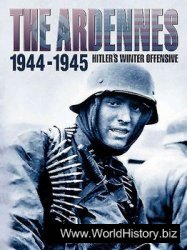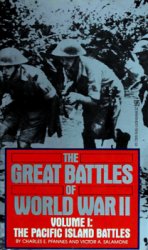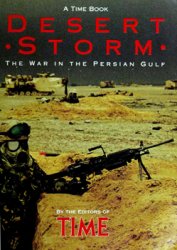13
IN LATE April 1945 General Pavlo Shandruk, head of the Ukrainian National Committee and commander-in-chief of all Ukrainian military formations, joined the Division. Along with him came Dr Wachter, Colonel Bisanz, and Dr Fritz Rudolf Arlt, an official initially with the General-gouvernement and later with SS operational headquarters. General Shandruk brought trident insignia for the Ukrainian soldiers to wear on their caps. A former officer of the Russian Imperial Army, Shandruk later served with the Ukrainian Army. In the interwar period he had served as a professional officer in the Polish Army, having graduated from its General Staff Academy.
The general, interested in all matters concerning the Division, asked Frei-tag and me for a detailed report. He was a model officer and quite sincere. At the front, he visited all of the units, whose members greeted him spontaneously. His visit came at an ideal time, because the enemy had just intensified the propaganda campaign urging the Ukrainians to go over to the Bolshevik side. He appealed to the conscience and honor of the Ukrainian soldiers and, invoking the pledge they had sworn, called upon them to fulfill their duties as soldiers. The presence of the general, in a Ukrainian uniform, made a profound impression on the Ukrainians of the Division and improved their morale greatly.
Wachter soon left the Division. General Shandruk left some days later to join the reserve-training regiment, where he set up his quarters. This was a very good idea, because direct and constant contact with General Freitag would have made him uncomfortable. In general, relations between Shandruk and the Division commander were not very good, which is not surprising considering their differences in character.
Nothing of consequence seemed to be happening at the front. Apart from the actions of enemy reconnaissance and assault teams, as well as an intensification of artillery fire, days at the front passed rather calmly. Neither side used tanks or planes. The main concern of the Division’s command at the time was the impending defeat of Germany. The problem of avoiding being taken prisoner by the Red Army loomed large for both Ukrainians and Germans. All units were subjected to a “purge” of unnecessary materiel, to make the Division as mobile as possible and to ready it for a march over the mountains in the event of a general retreat. These measures were taken in accordance with orders from the German High Command,
One could gather from these orders that the higher governmental authorities planned to continue fighting in the Alps, in accordance with the plans of the Reich administration. On this kind of a retreat only the most indispensable equipment could be taken, and only such equipment that could be readily transported across the most difficult and steep mountain passes without blocking them. This meant that the light guns had to have a ten-horse pulling team, and the heavier guns had to have a twelve-horse team. All other materiel was to be gathered in one depot and from there be transported by rail to the reserve regiment.
The work was done in great haste, and soon the depot grew to an immense size. The Division had already begun to rid itself of needless equipment, but even so, many things still came to be considered a useless encumbrance.
On z or 3 May 1945 all commanders, higher adjutants, and chiefs of staff were called to army headquarters for a conference. The conference was headed by General Balck, Commander-in-Chief of Panzer Armies. He expressed his belief in the positive result of approaching events and asked the commanders present to convey this view to their soldiers. He gave instructions for the conduct of battles and ordered greater use of reconnaissance groups; these groups were to stage raids deep into the enemy rearguard, remain behind enemy lines for as long as possible, and collect intelligence and destroy military objectives. The Ukrainians were to participate in these actions, particularly the more courageous officers.
The commander-in-chief claimed that supplies of ammunition were assured in the future, and that there was still enough fuel and ammunition in the supply depots near the front to successfully repel the enemy advance. Apart from this, he declared that the army had done everything possible to take over all ammunitions supply depots in districts under its control.
Those in attendance found his assessment difficult to believe and received it with considerable skepticism. At the same time, the officers returned to their units with some vague hope for the future—despite their disbelief in General Balck and their certainty that the end of the war was imminent, to be brought about by the complete collapse of Germany.
German forces on the Division’s right flank had been completely regrouped. Its new neighbor there was the i6th SS Panzergrenadier Division, the “Rei-chsfuhrer SS.”
By now the Allies had entered Austria from the west and the southwest. The commander of the Division allowed Captain Makarushka to leave for the Volkermarkt-Klagenfurt district to contact the Allies and notify them of the existence of the Ukrainian Division. On 5 or 6 May 1945 Makarushka met an English unit and was received correctly and cordially by its commander. Makarushka asked the commander to designate the Volker-markt district as the mustering point for the Division. This request was granted, because the Division’s reserve regiment and some other of the Division’s sub-units were stationed there.
The area was not yet occupied by the British Army, which had only just managed to reach Klagenfurt. They had not been able to occupy the city itself because it was the center for a garrison of Tito’s partisans, with which the advance units of the British force had only just come into contact. At Makarushka’s remark that Tito’s partisans would not tolerate the presence of the Division in the Volkermarkt district until the Allies arrived, the English commander simply instructed the Ukrainians to hold Volkermarkt until they did arrive. When reminded of the fact that the partisans were allies of the English, the commander simply repeated his instructions.
Makarushka then went to Volkermarkt, where he was soon summoned by the partisan command. Makarushka informed them that the English had instructed the Ukrainian Division to muster in the Volkermarkt district. They replied that this was impossible, since the city belonged to Yugoslavia, not to England. After lengthy negotiations Makarushka decided to order the reserve regiment to march northward, to avoid harassment from Tito’s partisans.
During the march the reserve-training regiment engaged in heavy battles with partisans and disintegrated into several small units. Since Makarushka no longer had any line of communication with the Division and knew nothing of its intentions, he sent guides to the fork in the road at Twimberg; they were to redirect the Division’s columns bound for Volkermarkt north toward Radstadter Tauern. Thus the plans negotiated by Makarushka with the English brigade commander had to be changed.
Wachter’s plan of crossing over to northern Italy and the Allies through
Tolmezzo seemed to be out of the question. First, the English had already entered the Volkermarkt-Klagenfurt district; and second, Yugoslav and Italian partisan formations had increased to such size that Tolmezzo was not passable. Also, the Division’s withdrawal would cause a tremendous weakening of the front and put the units stationed there in great danger.
On 6 May 1945 there was a conference of all divisional chiefs of staff at the command point of the 4th ss Panzer Corps. The discussion was headed by the commanding general himself. He said that Germany was faced with inevitable surrender. It was therefore necessary that measures be taken to avoid the capture of German and foreign national units by the Red Army. From 7 May the entire front was to disengage from the Red Army and, leaving all materiel behind, to move to territories occupied by the English and the Americans. On that day only the units of the 4th ss Panzer Corps that had pushed far into the front would be withdrawn. The retreat of the Ukrainian Division was to begin twenty-four hours later—on 8 May, when all units of the corps had been aligned. Eurther details of this withdrawal were discussed later.
On the afternoon of the sixth, all division commanders and commanding generals were summoned to General Balck’s headquarters. He notified them that Germany was on the brink of unconditional surrender and that capture of its army by the Red Army was to be avoided. At the Division’s suggestion, Volkermarkt was designated as a general mustering point.
For all units of the 4th SS Panzer Corps as well as for the right-hand neighbor of the Division, the ist Cavalry Corps, the retreat was made difficult by the small number of bridges spanning the Mur River, which flowed right behind the frontline. For the Division the situation was much worse because, as an infantry division, its retreat would be much slower than that of its motorized and mobile neighbors. It should also have been of particular importance that the Ukrainians not fall into the hands of their eastern enemy. However, despite the explanations of the Division’s status in the army—and requests for priority in retreat—the army command made no decision.
In the afternoon of the same day General Shandruk, Dr Wachter, Colonel Bisanz, and Dr Arlt returned to the Division. Wachter immediately went to army headquarters to secure earlier withdrawal for the Division.
In the previous few days the commanders of all the Division’s units had been informed of the general situation and the expected and possible events to come. At the end of this briefing session Colonel Bisanz requested that he be allowed to speak and delivered an impassioned speech. He called upon all commanders to conscientiously fulfill their duties, at this, the most difficult time for the Division. The order to withdraw did not surprise the Division, since it had made in advance detailed plans for retreat. The route assigned to the Division was as follows: the Pakstrasse from Graz through Wolfsberg to Volkermarkt.
The Division’s sapper company built a twelve-ton support bridge spanning the Mur River just south of Graz to enable a quick crossing for the Division during the retreat.
On 7 May, at iioo hours, the units forming the advance arcs of the front immediately to the left of the Division began to retreat. The Division itself had not yet been notified when it was to begin retreating. Already on that day, however, the Division commanders had moved all of their supply service and logistics units westward. All roads in this direction were clogged with German troops, but movement, supervised by numerous officers as well as by the military police, proceeded without a hitch.
Almost all units of the 6th Army, including the 4th ss Panzer Corps and the Division, retreated along the Pakstrasse. However, the various units of the ist Army were to march along this road from the southeast, from Wolfsberg north toward Radstadter Tauern; in other words, traveling in the direction directly opposite to the 6th Army. The congestion that resulted was worst at the crossroads near Wolfsberg, where the two marching columns met head on.
Unfortunately, the exact time of the retreat was not agreed upon by the I St and 6th armies, and a conflict in timing of retreat arose between the Division and the neighboring ist Cavalry Corps. This corps again became the Division’s neighbor to the right, because the Waffen SS Division “Rei-chsfiihrer SS” had been transferred to the Vienna district.
According to orders issued earlier, the Division was to have begun its retreat on 8 May at 1100 hours. The ist Cavalry Corps did not want to retreat until that evening, because they could not disengage from the enemy during the day. Also, the retreat of the Division’s left flank near Feldbach encountered a number of difficulties. On the other hand, the Division had to face the fact that its neighbor to the left would retreat during the day, and the Division could not possibly hold its positions with a flank exposed.
The Division’s dispute with the ist Cavalry Corps over the use of the Pakstrasse was one in which neither the 4th SS Panzer Corps nor the 6th Army wanted to become embroiled. Nothing was resolved, mostly because the units involved were all bent on serving their own interests. It became clear later that it would have been quite possible for both units to retreat along the same road simultaneously without serious delays or problems.
Throughout the day of 7 May both General Freitag and I asked the 4th ss
Panzer Corps to give them the exact time for the withdrawal of the Division from the front. All petitions received the same answer: “Wait. The orders will come.”
That evening, 1 was still trying vainly to get the corps to issue the appropriate orders. On 8 May, at 0200, Wachter telephoned to say that his car had broken down on his way to the 6th Army headquarters. He was surprised to learn that all was quiet on the Division’s sector of the front. To the best of his knowledge, the army had already given the orders for an immediate withdrawal.
All non-combat and support units of the Division had been moved to the rear. I again called the 4th SS Panzer Corps for orders and again received none. Finally, at 0600 hours, on 8 May, the chief of staff of the Panzer Corps phoned in the order for an immediate withdrawal from the front. Only a few rearguard units were to remain at the front line until 1400 hours. The Division was to march along the Pakstrasse in the direction of Volkermarkt.
The Division withdrew from contact with the corps, and from that point on, no further orders could be received. There was no particular personal farewell, not even between the commanding general and the Division commander. It was a strange way to release the Division from the ranks of the 4th SS Panzer Corps. It was clear that, for the Germans, the Division was a division of foreign nationals, not a German division.
The Division immediately issued orders for a retreat to all of its units, which had been awaiting them impatiently. Amid renewed fighting, the staff remained near the front until 1000 hours, then quickly transferred its headquarters to the other side of the Mur River. Enemy activity intensified as they noticed the retreat. However, the disengagement and withdrawal proceeded as planned. The rearguard commanders carried out their tasks in defending the retreat. Only on the left flank did problems occur. The 30th Regiment ran into some difficulties near Feldbach and suffered some casualties. The enemy was only carrying out isolated attacks and did not mount any offensives along the entire front.
The retreat proceeded well, even though all roads were overflowing with traffic. There was no air cover to defend the marching columns. That afternoon Soviet planes strafed and bombed them, but they did not inflict any serious damage. All units carried only the most essential and rudimentary weapons and supplies; they left all heavy weaponry, especially artillery pieces and heavier stores of supplies, behind. Some of the heavier weapons were deliberately damaged to make them unfit for further use.




 World History
World History









